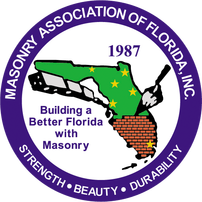Detailed questionWe are a residential engineering and design company in Central Florida, and have several builders inquiring about removing as many grouted filled cells as possible to reduce cost. They comment that we are more conservative than our competitors. We have completed our own wall calculations based on TMS 402-13 (and confirmed with NCMA software), and are comfortable with our grout filled cell spacing calculations; however, the code is less clear about filled cell requirements around openings. Some of our competitors only place a filled cell (typically with (1) vertical #5 bar) on one end of shorter window and door openings. I’ve heard several engineers cite FBC 2121.2.2.2 (see below), but of course this is only for High Velocity Hurricane Zones, and that section has several other requirements for “tie columns;” namely 2121.2.2.3 & 2121.2.2.4. In my view you can’t follow one section of the code, and ignore the others. I’ve spoken to plans examiners and inspectors, who cite Figure R606.11(1) showing reinforced filled cells on both sides and above and below openings; however, this section is prescriptive, deals with anchorage, and has unclear requirements (“Wind loads less than 30 psf,” is that design or ultimate pressure?). The most relevant code citations I can find are in R301.2.1.1, which points me to FBC, Section 2107: Allowable Strength Design, which references back to TMS 402-13. I can’t find any clear-cut requirements about reinforced filled cell placement around openings. Assuming we don’t need the reinforced filled cell for the loading requirements, or buck fastening, is there a code citation, construction guide, white paper, or other source we can reference regarding filled cell requirements around openings. If not, what is your view as far as best practices or typical industry standards. Referenced code section: 2121.2.2.2 When openings are between 3 and 8 feet (914 mm and 2.4 m) in width, such openings shall have one #5 vertical reinforcing bar at each side. The vertical bars shall be placed in concrete filled cells and shall extend into footings and into tie beams. All such bars shall be continuous from footing to tie beam. All splices, where needed, shall be 30 inches (762 mm) minimum. 2121.2.2.3 Tie columns shall be not less than 12 inches (305 mm) in width. Tie columns having an unbraced height not exceeding 15 feet (4.6 m) shall be not less in thickness than the wall or less than a nominal 8 inches (203 mm), and, where exceeding 15 feet (4.6 m) in unbraced height, shall be not less in thickness than 12 inches (305 mm). The unbraced height shall be taken at the point of positive lateral support in the direction of consideration or the column may be designed to resist applicable lateral loads based on rational analysis. 2121.2.2.4 Tie columns shall be reinforced with not less than four #5 vertical bars for 8 inch by 12 inch (203 mm by 305 mm) columns nor less than four #6 vertical bars for 12 inch by 12 inch (305 mm by 305 mm) columns nor less reinforcing steel than 0.01 of the cross-sectional area for columns of other dimension nor less than may be required to resist axial loads or bending forces. Vertical reinforcing shall be doweled to the footing and splices shall be lapped 30 bar diameters. Columns shall be tied with #2 hoops spaced not more than 12 inches (305 mm) apart. Detailed AnswerGreat question: Short answer - up to the registered engineer or architect - not specifically addressed in any code that would usurp the judgement of the design professional....Period.
Very Long Answer: Lets start with section 2121 of the 6th Edition FBC - Building. These are historic prescriptive requirements and there has ALWAYS been confusion as to where and how they apply. Thus, we inserted the following section into 2122 - Reinforced Unit Masonry - to try and drive home that 2121 just does not apply to masonry designed in accordance with the provisions of TMS 402/602: 2122.1Standards. The provisions of TMS 402/ACI 530/ASCE 5 and TMS 602/ACI 530.1/ASCE 6 are hereby adopted as a minimum for the design and construction of reinforced unit masonry. In addition to TMS 402/ACI 530/ASCE 5 and TMS 602/ACI 530.1/ASCE 6, reinforced unit masonry structures shall comply with Sections 2122.2 through 2122.10. 2122.2General. 2122.2.1 Section 2121 shall not apply where design and construction are in accordance with the provisions of this section. Thus you are completely correct that the provisions of 2121 are unique and independent and offer no guidance in properly designing your masonry structure - unless you want to use them in their entirety in designing your structure. Ok, now to the residential code. Not much help there. As you indicated, Figure R606.11(1) shows some interesting stuff but nothing that gives you the guidance you, as a designer, are looking for. The provisions calling for steel girding all openings is a seismic provision dealing primarily with shear. For shear in residential wind design you are generally going to distribute your shear to solid wall sections depending on their stiffness and utilizing only the un-reinforced value of masonry. If your un-reinforced shear value of the individual solid panels is not sufficient and you have to design a reinforced masonry shear wall you would absolutely be reinforcing around all sides of openings --- but --- that is almost never going to be the case with residential design - and is rarely the case with low-rise commercial design. Bottom line is you are generally not going to see masonry under an opening unless it is there of crack control (not structural reasons). R301.2.1.1 references the ICC 600 in which section 405.3.2 "Openings in Masonry Walls" gives some common sense guidance to put a bar on either side of openings over 6' wide and to make sure that any bars interrupted by the opening get distributed to both sides. For openings in residential structures this is about as good as it gets. For large openings you have to make sure that the wall segment on either side will take the load from 1/2 the opening width. Where you have a number of large openings in a row this can be challenging. Hope this helped. Obviously, you are always going to put a bar over the opening.
2 Comments
Shelly Hatch
12/11/2020 10:15:23 pm
What if the cmu cells were not filled with concrete or had rebar?? Isnt that against code and wouldnt builder be responsible? Our house was built in 2007 and we just found out, by drilling holes in house that the cmu cells are empty.😕 what can we do??
Reply
Ned
4/6/2024 10:06:17 pm
Shelly, send pics of your butth0le for a detailed answer about filling your cells.
Reply
Leave a Reply. |
Authors:

Categories
All
Archives
May 2024
|
Masonry Resources |
MAF Websites |
Masonry Association of Florida, Inc. |PO Box 24474 , Fort Lauderdale, FL 33307
Copyright © 2017. All Rights Reserved.
Sitemap
Sitemap

 RSS Feed
RSS Feed
